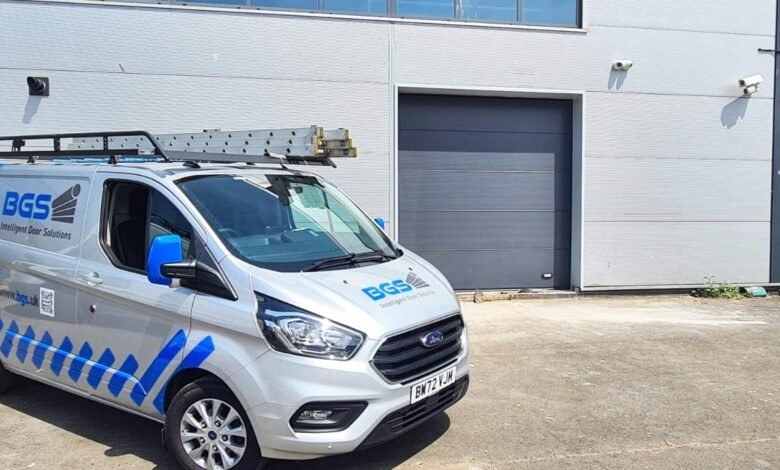
Efficient traffic management is essential for commercial and industrial sites. Whether it’s controlling the movement of vehicles in and out of a warehouse, factory, or office park, or ensuring smooth operations in areas with high vehicle traffic, proper control systems can make a significant difference in the efficiency and security of the site. Electric gates are one of the most effective tools for managing traffic flow on commercial properties. These automated systems offer several benefits, from improving security to optimizing logistics, making them a must-have for modern commercial and industrial environments.
In this blog, we will explore how electric gates can help control traffic flow on commercial sites, focusing on their advantages for security, operational efficiency, and logistics.
1. Enhancing Security at Entry Points
One of the primary functions of electric gates is to secure access to commercial properties by controlling who can enter and exit. This is particularly important for industrial sites where the security of goods, personnel, and equipment is critical.
Controlled Access: Electric gates allow for controlled access, ensuring that only authorized vehicles can enter the site. By integrating the gate system with security features such as keypads, RFID cards, or biometric scanners, businesses can maintain strict control over who enters the premises. This reduces the risk of unauthorized access and helps protect the site from theft or vandalism.
Monitoring Traffic: Electric gates can be equipped with cameras and other monitoring devices to record the movement of vehicles in and out of the property. This not only helps in identifying any suspicious activity but also creates a log of all incoming and outgoing traffic, which can be invaluable for security audits or investigations.
Secure Perimeter: For large commercial or industrial properties, having a secure perimeter is crucial. Electric gates, combined with fencing, help create a physical barrier that prevents unauthorized entry, ensuring that the property remains secure at all times. This also helps to prevent issues such as loitering or trespassing on the site.
2. Improving Traffic Flow for Efficiency
In addition to securing the premises, electric gates also help manage the flow of traffic in and out of a commercial site. This is particularly important for businesses that deal with a high volume of vehicles, such as logistics hubs, warehouses, and distribution centers.
Automated Traffic Control: One of the main benefits of electric gates is their ability to automatically open and close based on pre-set rules or signals. This reduces the need for manual intervention, allowing traffic to flow smoothly. For instance, electric gates can be set to open automatically for outgoing vehicles while requiring authorization for incoming traffic, ensuring efficient movement while maintaining security.
Streamlining Entry and Exit: Electric gates can help avoid congestion at entry and exit points by regulating the flow of vehicles. This is particularly useful during peak hours when there may be a high volume of traffic entering or leaving the site. By controlling the speed at which vehicles can pass through the gate, businesses can reduce the risk of traffic jams or accidents at these critical points.
Reducing Waiting Times: Manual gates often lead to delays, especially when a guard or personnel needs to manually open and close the gate for each vehicle. Electric gates eliminate this waiting time, as they can be opened remotely or automatically in response to authorized signals. This is particularly important for commercial sites where time-sensitive deliveries or pickups are a regular occurrence.
3. Managing Multiple Access Points
For large commercial sites with multiple access points, electric gates are essential for effective traffic management. They allow businesses to designate specific gates for different types of traffic, such as delivery trucks, employee vehicles, or visitor parking.
Designated Lanes: Electric gates can be set up to manage different types of traffic, such as creating separate lanes for trucks, staff, and visitors. This not only improves the flow of vehicles but also ensures that each type of traffic is directed to the appropriate area of the site. For instance, heavy vehicles can be routed to loading docks while staff vehicles are directed to parking areas.
Time-Based Access: Electric gates can be programmed to allow access only during specific hours of the day. This is useful for controlling deliveries or employee access, ensuring that only authorized vehicles can enter the site during off-hours. This also reduces the risk of accidents or damage to property during times when the site is not fully staffed.
4. Integrating with Logistics Systems
Many commercial and industrial sites are now integrating electric gates with their logistics systems to further enhance traffic flow and efficiency. By connecting the gate system with logistics software, businesses can create a seamless process for managing deliveries, pickups, and other vehicle-related tasks.
Real-Time Coordination: Electric gates can be integrated with a company’s logistics system to coordinate the arrival and departure of delivery trucks. For instance, a delivery truck’s arrival time can be logged into the system, which will automatically open the gate when the truck arrives. This reduces delays and ensures that deliveries and pickups are handled efficiently.
Optimizing Traffic Patterns: By analyzing traffic patterns on the site, businesses can adjust their gate settings to optimize vehicle flow. For instance, if certain times of the day are particularly busy, businesses can program the gates to remain open for longer periods or create automated signals that prioritize certain types of traffic, such as outgoing deliveries.
5. Reducing Labor Costs and Human Error
Electric gates reduce the need for manual gate operation, cutting down on labor costs and minimizing the chance of human error. With manual gates, there is always the possibility that someone may forget to close the gate after it’s been opened, compromising security. Electric gates eliminate this risk, as they are programmed to close automatically after a vehicle has passed through.
Remote Operation: Electric gates can be operated remotely, allowing security personnel to manage traffic from a central control room. This reduces the need for guards to be physically present at each gate, freeing up personnel for other tasks while maintaining effective traffic management.
Automated Protocols: Electric gates can be programmed to follow specific protocols based on the time of day or the type of traffic. For instance, gates can be set to allow free exit during busy times while requiring authorization for entry. These automated protocols help streamline operations and reduce the possibility of errors or delays.
Conclusion: Electric Gates as a Traffic Management Solution
Electric gates are an invaluable tool for controlling traffic flow on commercial and industrial sites. They not only enhance security but also streamline traffic management, improving the efficiency and logistics of the site. By automating the process of controlling who enters and exits the property, businesses can reduce waiting times, prevent congestion, and maintain a secure perimeter.
At BGS, we specialize in providing high-quality electric gates Bridgend that are tailored to meet the unique needs of commercial properties. Our electric gates are designed to integrate seamlessly with your existing security and logistics systems, offering a comprehensive solution for managing traffic and securing your site. Contact us today to learn more about how we can help you enhance traffic control on your commercial property.




